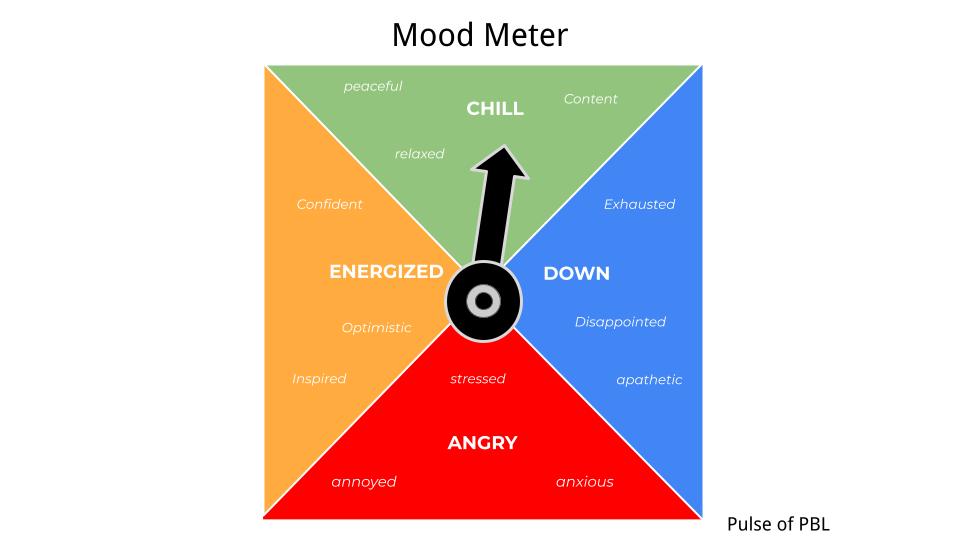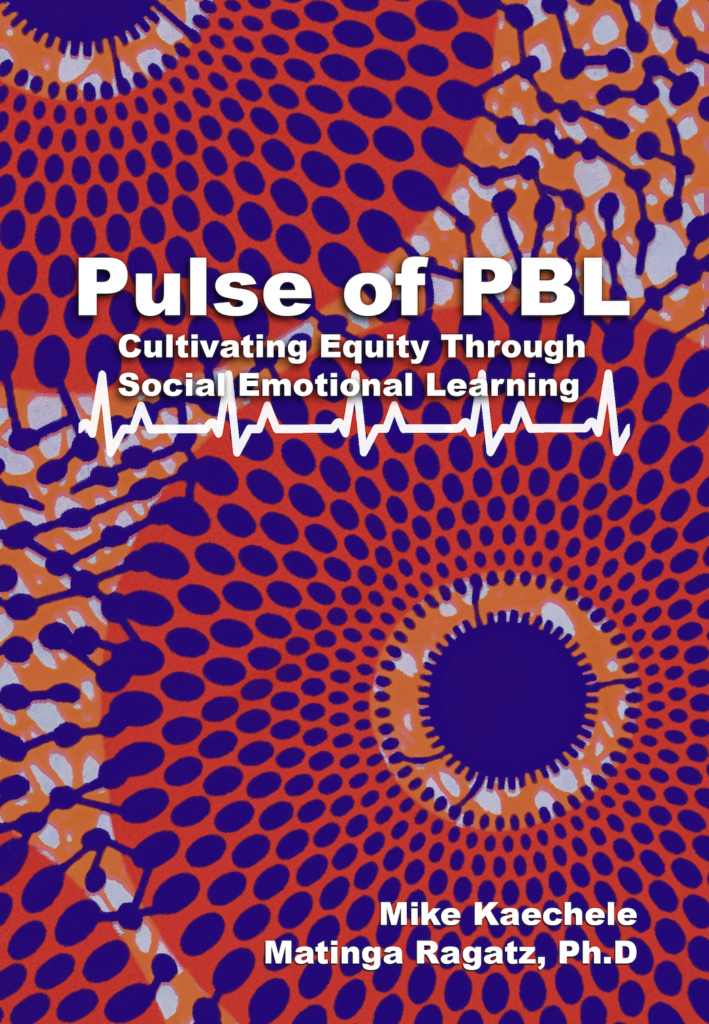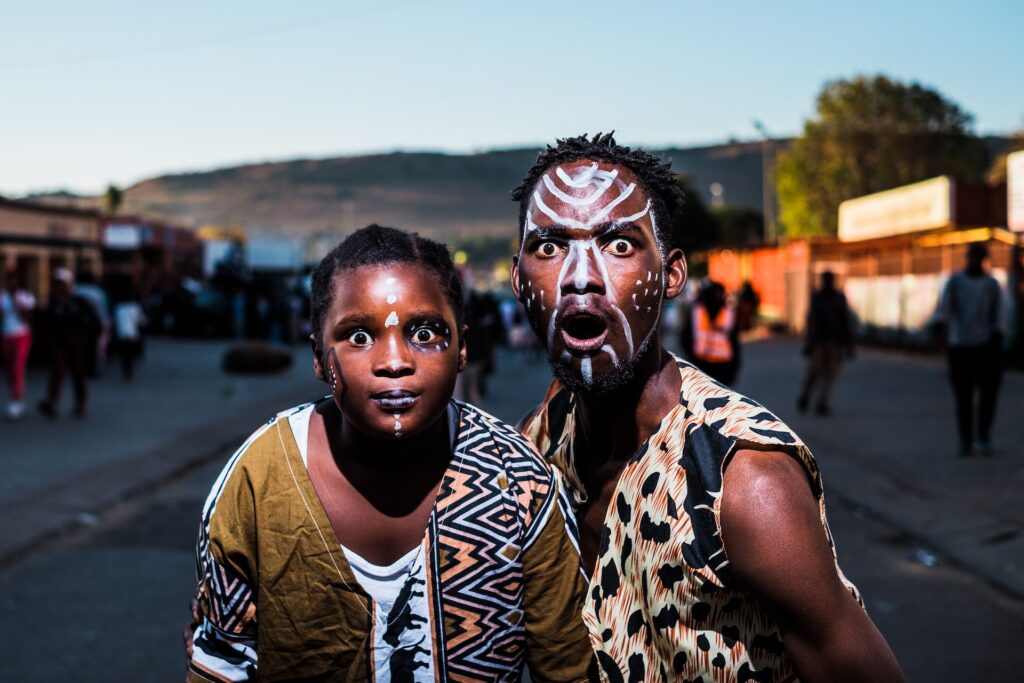
I have never been one for New Year’s resolutions. Most of my planned changes around exercise and diet are lucky to last a month. So rather than resolutions, let’s look at 5 ways to start integrating Social and Emotional Learning competencies into your daily classroom routines.
1. Check in
Students develop their Self-Awareness when they feel safe and loved. Teachers create psychological safety by establishing meaningful relationships through daily conversations with all of their students. An excellent routine for this is meeting students at the door. You might give students a greeting choice or if you are extremely creative you could have a personalized handshake for every student.

Another tool is the mood meter. This helps students identify their emotions which is the first step to learning self-control. Use the Check In as a formative assessment on whether or not each student is ready to learn or has some concerns that need to be addressed first. Check Ins might feel too touchy/feely for secondary teachers, but middle and high school students desire to be seen daily too.
If you are still teaching virtually, you can greet students by name when they enter the space. You could have them tell you their mood via public or private chat. You can also use a Google form to check in with how students are feeling. I like to play a song and have students vote “jam” or “not a jam” in the chat for attendance. It’s a fun way to start a session and build some community. I have even started taking student song requests.
2. Check out
An important part of Responsible Decision Making is reflection. Reflection creates velcro moments where the learning “sticks.” Start a daily routine of ending each class with a Check Out. Try journaling, exit tickets, or turn and talks. Mix it up between written and verbal checkouts to keep it fresh.
Sometimes reflection should focus on content with a formative check of a concept learned. Other times students can self assess on an SEL competency that the class is concentrating on. Students could consider how their group is working together or if they have been actively listening without judgement. Reflection doesn’t need to be a huge time suck. Two or three minutes a day is enough.
Checking out virtually is easy to adapt. You can have them share in pairs in random breakout rooms, post their thoughts in the chat, on Padlet, in a Google Form, or in a myriad of other online tools (stick to a few key online tools so as not to overwhelm students and parents). They could record a 30 second reflection on Flip or SeeSaw.
3. Re-evaluate Norms
The start of the year is a great time to reboot class norms and routines, but why not ask students to evaluate the current class culture? Give your students specific scenarios where they struggle to discuss in a talking circle. Students will develop Self-Management by coming up with updated norms for class.
Each day assign one SEL norm to focus on during the class period. At the end of class, have students self assess how they did on that norm by holding up a fist to five. Be sure to debrief privately with individual students whose number does not match your observation (whether it is higher or lower). This is your opportunity to reinforce the norms and hear their perspective on why they are struggling.
For online classes, assigning a norm to focus and reflect on, can be done with a fist to five held up to the camera or by having students type the number to you in a private chat message. Have students reflect on the norms of your online class and what has and hasn’t been working. Mimic a talking circle by having students call out another’s name and “pass” an imaginary talking stick to each other’s video squares in gallery view. Have fun by pretending to throw and catch it!
4. Read
Empathy is the most important aspect of Social Awareness. Lack of empathy is a major cause of conflicts around the world. Literature is a great way to teach it. In Culturally Responsive Teaching and the Brain Zaretta Hammond states, “When we are being told a story or are telling it, the brain’s neurons light up not only in the language processing parts of the brain but in other regions just as if we were performing the action ourselves (p.135).” Stories allow us to experience other’s lives and perspectives.
Literature should be a part of every classroom, kindergarten through high school. Some of the best genres to teach empathy are biographies and historical fiction. Choose diverse stories to encounter feelings and opinions from across time and space. Don’t neglect less traditional forms such as graphic novels, podcasts, audio books and picture books. Read aloud to your whole class to engage reluctant readers in empathetic stories.
Virtually, you can still have a group read aloud and for fun invite in special guest readers. It could be older students, parents, or kids in another part of the world. Since students are in remote learning situations across the globe, use this as an opportunity to find a sister class and learn about another culture and the stories that they tell.
5. Launch a Project
Project Based Learning is the ideal framework for SEL. Look over your standards for the next quarter and think about what adults use that content and in what context. Have your students actively engage by mimicking professional jobs that match the content. Invite in local experts to guide your students through inquiry. For project ideas by grade level and content, check out the Project Library at PBLWorks.org.
Relationship Skills such as teamwork and communication are best taught, practiced, and assessed in the context of student groups working on an authentic project. Students need to be directly taught SEL, just like any content or skill. Don’t try to teach all of the competencies at once. Choose one aspect at a time to address during the project so students can focus on improvement in that area.
In remote learning situations, developing Relationship Skills can be challenging, but students are social beings who crave interaction. Use breakout rooms and schedule small group meetings to help student teams organize and complete tasks. One advantage is that with so many adults working from home, it can actually be easier to get guests to video conference with students. They can be more than just a guest speaker, but can co-design with students or give critiques of their work. Learning how to manage a team virtually is one of the most authentic and practical skills that students can master.
Learn with me!
If you are interested in how your school can develop high quality projects in a PBL framework, I would love to have a conversation on how I can help. I have limited availability for PBL & SEL workshops during the school year so contact me early. Check out my workshop page or drop me an email at mikejkaechele@gmail.com. I would love to chat and co-plan meaningful PD for the educators at your school.
Pulse of PBL



